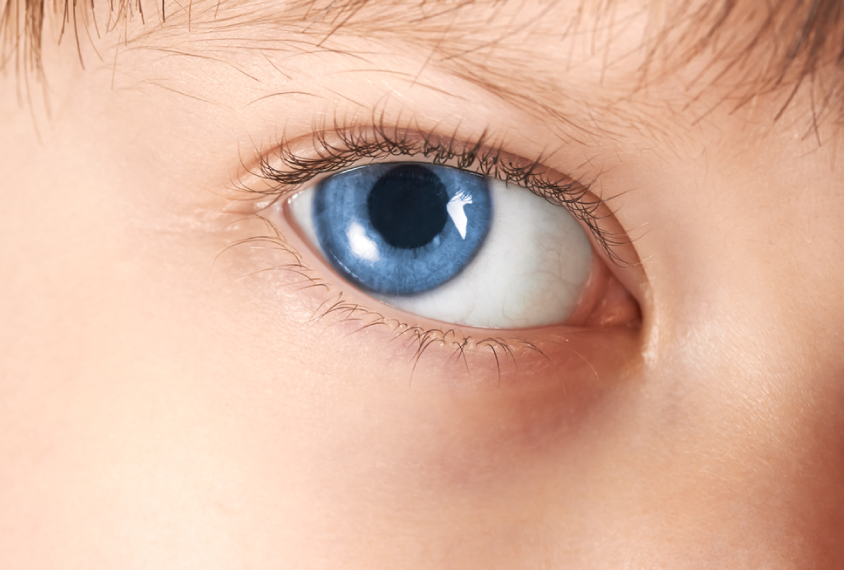IMFAR 2016
Recent articles
Delayed pupil response to light may be early sign of autism
The pupils of preschoolers with autism are slow to constrict in response to light, a phenomenon that may serve as an early marker of autism risk.

Delayed pupil response to light may be early sign of autism
The pupils of preschoolers with autism are slow to constrict in response to light, a phenomenon that may serve as an early marker of autism risk.
Takeaways from IMFAR 2016
Researchers, advocates and others from the autism community came together for the 2016 International Meeting for Autism Research in Baltimore.

Takeaways from IMFAR 2016
Researchers, advocates and others from the autism community came together for the 2016 International Meeting for Autism Research in Baltimore.
New tool lets cognitive skills guide autism treatment
A new algorithm relies on abilities rather than diagnoses to steer clinicians toward personalized treatments for autism and attention deficit hyperactivity disorder.

New tool lets cognitive skills guide autism treatment
A new algorithm relies on abilities rather than diagnoses to steer clinicians toward personalized treatments for autism and attention deficit hyperactivity disorder.
Disparities in autism diagnosis may harm minority groups
Clinicians are underdiagnosing autism in children from low-income families and minority groups — setting back their potential to benefit from therapy.

Disparities in autism diagnosis may harm minority groups
Clinicians are underdiagnosing autism in children from low-income families and minority groups — setting back their potential to benefit from therapy.
Mouse with key autism mutation defies expectations
Mice with a mutation in CHD8, the top autism gene, show no signs of any of the condition's core features.

Mouse with key autism mutation defies expectations
Mice with a mutation in CHD8, the top autism gene, show no signs of any of the condition's core features.
Distinct folding in autism brain hints at condition’s origins
A brain region involved in reading faces has fewer folds in toddler boys with autism than it does in controls, a structural difference that could be related to social difficulties.

Distinct folding in autism brain hints at condition’s origins
A brain region involved in reading faces has fewer folds in toddler boys with autism than it does in controls, a structural difference that could be related to social difficulties.
New video tool talks parents through autism screening
A video-guided screening tool may boost the reliability of parent reports about autism-like behaviors.

New video tool talks parents through autism screening
A video-guided screening tool may boost the reliability of parent reports about autism-like behaviors.
Diagnostic manual may need to separate repetitive behaviors
A detailed analysis of the behavior of 6,500 children suggests that five types of behaviors lumped together in current diagnostic guidelines should each be considered separately.

Diagnostic manual may need to separate repetitive behaviors
A detailed analysis of the behavior of 6,500 children suggests that five types of behaviors lumped together in current diagnostic guidelines should each be considered separately.
In Gaza Strip, autism researchers battle dearth of resources
Researchers are trying to study autism in one of the most politically and economically unstable regions in the world.

In Gaza Strip, autism researchers battle dearth of resources
Researchers are trying to study autism in one of the most politically and economically unstable regions in the world.
Social gaze patterns strikingly consistent between identical twins
Identical twins, who have virtually the same genetic material, show highly similar patterns of eye movements when looking at faces, suggesting that social gaze is hardwired.

Social gaze patterns strikingly consistent between identical twins
Identical twins, who have virtually the same genetic material, show highly similar patterns of eye movements when looking at faces, suggesting that social gaze is hardwired.
Explore more from The Transmitter
AI-assisted coding: 10 simple rules to maintain scientific rigor
These guidelines can help researchers ensure the integrity of their work while accelerating progress on important scientific questions.

AI-assisted coding: 10 simple rules to maintain scientific rigor
These guidelines can help researchers ensure the integrity of their work while accelerating progress on important scientific questions.
Glutamate receptors, mRNA transcripts and SYNGAP1; and more
Here is a roundup of autism-related news and research spotted around the web for the week of 15 December.

Glutamate receptors, mRNA transcripts and SYNGAP1; and more
Here is a roundup of autism-related news and research spotted around the web for the week of 15 December.
Frameshift: Shari Wiseman reflects on her pivot from science to publishing
As chief editor of Nature Neuroscience, Wiseman applies critical-thinking skills she learned in the lab to manage the journal’s day-to-day operations.

Frameshift: Shari Wiseman reflects on her pivot from science to publishing
As chief editor of Nature Neuroscience, Wiseman applies critical-thinking skills she learned in the lab to manage the journal’s day-to-day operations.